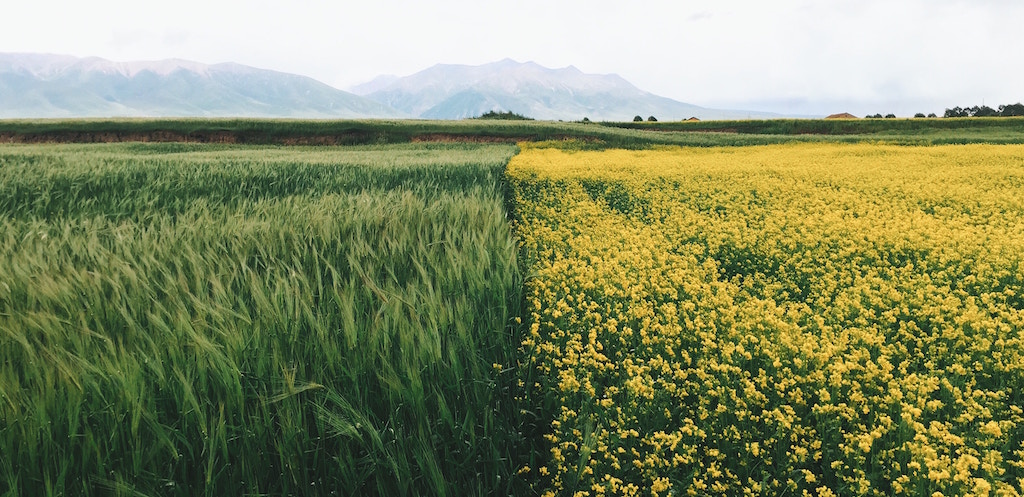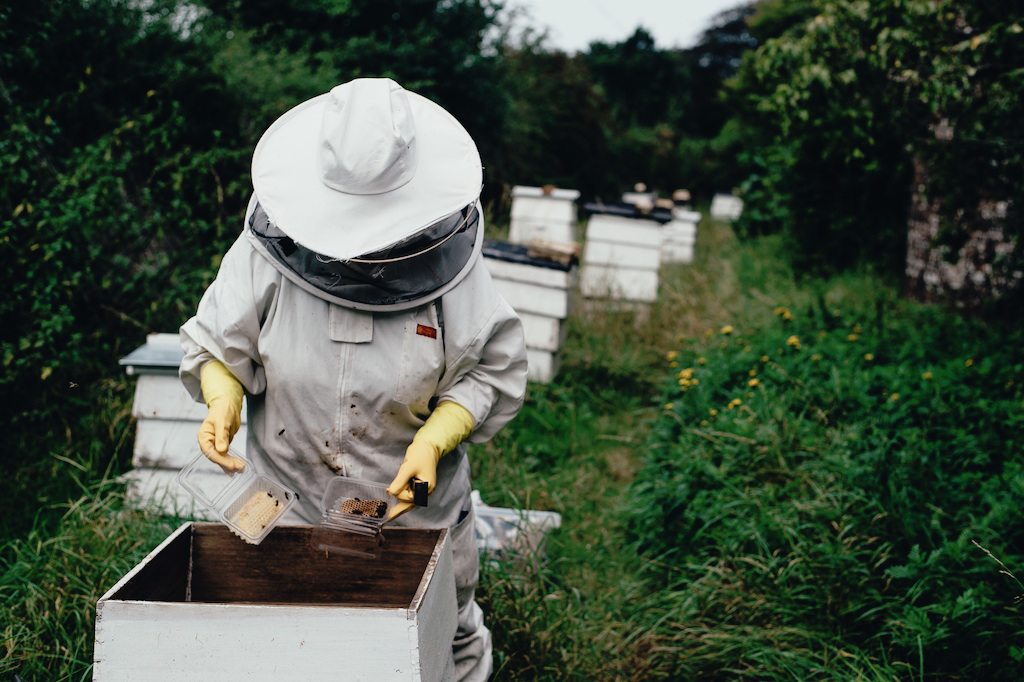Editor’s note: The response from our readers to Nathan Rosenberg and Clay H. East’s March 20 commentary debunking the rise of the young farmer myth has been just the way we like it: multi-layered, rousing, and savvy as all get out. We consider it a reflection of the rich human and natural landscape we’re so fortunate to cover. Here, the original authors respond to readers’ criticism.
We wrote our commentary because we believe the media’s dominant narrative about young farmers—that they are a highly diverse and growing group—undermines the effort to create a more just and equitable food system. This misleading narrative minimizes the systematic barriers many young farmers face. We hoped that the commentary would spur dialogue about these barriers and that journalists and advocacy organizations would seriously engage with the data, pushing policymakers to better address the needs of struggling and marginalized farmers.
So we were heartened when we realized that two prominent members of the National Young Farmers Coalition (NYFC), whose work we admire, had written responses to our commentary. We support the coalition’s work to make farming more accessible, and although its surveys are not representative (as the coalition makes clear), they remain a valuable source of information about young farmers. We were soon disappointed to find, however, that they not only misrepresented our views, but also made several false assertions about the Census of Agriculture.
The first response, written by the executive director of NYFC, Lindsey Lusher Shute, took the form of a tweetstorm offering a “point-by-point discussion” of her organization’s survey and our commentary. The second, written by a member of the coalition, Linley Dixon, was published in The New Food Economy. Each made two broad claims: 1) that we misrepresented data and 2) that the data we analyzed was no longer relevant.
Before we address these claims, however, we want to note that neither response disputed the fact that the agricultural census does not demonstrate a recent increase in the number of young, female, or minority farmers. Since this was one of the central points of our commentary, and has important implications, we hope they engage with this finding in the future.
The data
Shute and Dixon objected to our use of data regarding flower and vegetables sales to demonstrate the differences between the coalition’s 2017 survey and the Census of Agriculture. It’s true that very few farms sell only flowers, as they point out, but that does not explain the discrepancy between the two surveys. The census includes every farm that sells a particular crop in that crop’s sales category, regardless of how little of that crop they may sell. Thus, if a young farmer with a diversified operation grows both flowers and vegetables, their farm would be included in the census totals for both categories. The presumption that the census data do not capture operations that sell multiple crops, which Shute and Dixon seem to share, is unfounded.
The census
They also criticized our use of data from the 2012 Census of Agriculture. Shute wrote that the agricultural census “was taken in 2011” and so our critiques of media accounts of young, female, and minority farmers “don’t make sense.” “What would a 2011 transportation survey say about @Uber?” she asks. Dixon writes that the agricultural census data were “collected more than six years ago.” “A lot has happened since the 2012 census,” she continues, “and that is reflected in the more recent Washington Post and New York Times articles Rosenberg and East criticize.”
There are three problems with this critique. First, the 2012 Census of Agriculture was conducted in 2012 and 2013, not in 2011. Second, many of the media accounts we’re critiquing predate the publication of the 2012 Census of Agriculture. The New York Times article that Dixon claims captures a post-2012 uptick in young farmers, for example, was actually published in 2011. Our intent was to reveal that the “rise” of female, minority, and young farmers is a long-running journalistic cliché—not a reality—the result of a series of important changes to the agricultural census that began in 1997 and have made each census since then significantly different from the ones that preceded it.
Third, the journalistic accounts we are criticizing, as well as the NYFC, rely exclusively on data from the Census of Agriculture to demonstrate the increases they’re purporting to document. The coalition’s November 2017 report on its most recent survey, for example, uses the 2012 Census of Agriculture as the basis for its assertion that “many young Americans are stepping up and launching new farm businesses.” If Uber relied on a transportation survey conducted in 2013 to make a factual claim in November of 2017, it would be disingenuous of Uber to claim four months later—after its interpretation of the data was revealed to be incorrect—that the same survey was no longer relevant.
Dixon also writes that large-scale farms are “disproportionately represented in USDA agricultural census data” and that the 2012 census “never fully accounted for entrepreneurs who don’t own land.” While this was true prior to the 2002 agricultural census, the available evidence indicates that this is no longer the case. In 2017, Rosenberg published a peer-reviewed analysis of agricultural census data that discussed recent changes to the agricultural census. While historically it undercounted many different groups of farmers, including tenant, minority, and young operators, USDA has gone to great lengths to make the census more accurate since it took it over from the Census Bureau in 1997. USDA uses an independent survey, conducted through in-person interviews with the help of aerial imagery, to assess the accuracy of the census and adjust the final results. These methods account for farmers that were missed by the survey, significantly boosting the final tally of small-scale and young farmers in the agricultural census.
The movement
Dixon begins her response by noting that she “took offense” to our commentary in part because she is “part of the movement they said ‘didn’t exist,’ and I’ve met and communicated with thousands of other farmers who are, too.” Nonetheless, “I realized that I actually agree with their conclusions, if not their analysis.” “Where we disagree,” she continues, “is whether or not this modern-day ‘back to the land’ movement currently exists and at what scale it is occurring.”
Although we are glad Dixon shares our conclusions, we never claimed that a movement “didn’t exist” and we did not mean to imply that. While we believe that the media misrepresented the coalition’s survey, we don’t believe the data discredit the coalition or its work on behalf of young farmers in any way, and we apologize if we gave that impression. Both of us care deeply about creating a more equitable food system and have been inspired by the increasing number of people who are working to make agriculture more just and sustainable. Rosenberg has spent more than a decade researching and advocating for small-scale and minority farmers. It is this research that has led us to conclude that, despite a renewed interest in farming, the number of young, female, and minority farmers has continued to fall.
Many of these farmers have expressed frustration with the repeated reports about the “rise” of young, female, and minority farmers, which they know from direct experience to be inaccurate. As one farmer, who had also lobbied on Capitol Hill on behalf of minority farmers, explained to us, it’s hard to convince legislators to address discrimination and funding disparities on behalf of groups that USDA claims are increasing in size.
Dixon later writes: “What we should really be talking about (besides whether or not a critical mass of young minority farmers exists) is the fact that, despite their real desire and attempts to farm full-time, many new farmers are failing to succeed.” We agree that this discussion is necessary. We intended for our commentary to advance that conversation, which is why our conclusion focuses on the structural barriers that aspiring farmers face, particularly those who do not come from wealthy backgrounds. We can’t address why new farmers are failing, however, if we continue to insist that they’re succeeding.
We realize that the data may be discouraging at times, and may conflict with the type of optimistic narrative that funders find so compelling, but if advocacy organizations seek to further the interests of all young farmers, regardless of background, they must try to understand the world as it is, not as they wish it to be.












